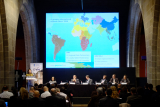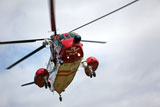
Keeping all lines of communications open during a crisis is critical . and the Dublin Fire Brigade has shown how this can be done using satellite and hybrid technologies.
An emergency exercise in Malahide estuary, north of Dublin, Ireland, put the fire service.s pilot information and communication system through its paces last month.
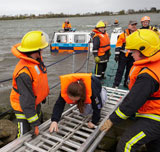 REACT, or Resource for Emergency services to Access Command and control data using satellite and hybrid Technologies, is a project co-funded by ESA.s ARTES 3.4 satcom applications programme.
REACT, or Resource for Emergency services to Access Command and control data using satellite and hybrid Technologies, is a project co-funded by ESA.s ARTES 3.4 satcom applications programme.
It provides secure and reliable exchange of information between emergency personnel on the scene and their command and control centre during a crisis and incidents such as car accidents.
REACT combines mobile phone technology with satcoms and the emergency service.s communication system, TETRA. This ensures there is always an open link during a major incident, even if the phone network is not working or overloaded.
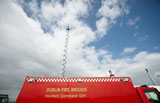 Thanks to broadband satcoms, the system provides a range of voice, data and video channels between the fire service personnel on the ground and the commanders in a central command and control room. This enables the controllers to coordinate the response using the information they are receiving from officers on the ground.
Thanks to broadband satcoms, the system provides a range of voice, data and video channels between the fire service personnel on the ground and the commanders in a central command and control room. This enables the controllers to coordinate the response using the information they are receiving from officers on the ground.
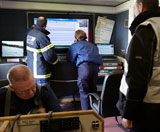 For the exercise, an Incident Command Unit was sent to the emergency scene, adapted with a Ka-band satellite dish and a CCTV camera to send and receive information and images.
For the exercise, an Incident Command Unit was sent to the emergency scene, adapted with a Ka-band satellite dish and a CCTV camera to send and receive information and images.
The vehicle operates as a communications hub, providing realtime links through voice and video conferencing services from the scene to the command and control room.
This allows an operational picture of the incident to be shared between the scene commander and the command and control personnel, who are more efficient at delivering support to officers at the scene.
 A touchscreen monitor inside the vehicle gives access to REACT applications, such as an interactive smartboard for sharing maps, plans and sketches with the control room. High-resolution images from the cameras of first-responders can also be sent.
A touchscreen monitor inside the vehicle gives access to REACT applications, such as an interactive smartboard for sharing maps, plans and sketches with the control room. High-resolution images from the cameras of first-responders can also be sent.
REACT provides seamless streaming of audio, video and data from the incident to the commanders, giving an all-round view of the situation on the ground and providing an invaluable realtime picture.
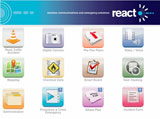 Lead partner Skytek has made sure that the look and feel of the control panel and electronic forms fit with Dublin Fire Brigade.s existing operational procedures and paper-based records, allowing personnel to use the system and software with minimal training.
Lead partner Skytek has made sure that the look and feel of the control panel and electronic forms fit with Dublin Fire Brigade.s existing operational procedures and paper-based records, allowing personnel to use the system and software with minimal training.
ESA’s Olivier Becu welcomed the demonstration of REACT in an emergency response exercise: “The experience gained from this exercise enables Skytek to verify that the system actually supports the Dublin Fire Brigade to provide an integrated and coordinated response to an emergency event.”
Ritchie Hedderman, Head of Operations at the Dublin Fire Brigade, added, .In the event of a major emergency, secure and reliable communications are vital to the emergency services.
"I feel that the satellite communications in time will prove to be the primary and preferred means for communicating as it can supply voice, video and data back to regional and national control centres where strategic commanders can assess situation on the ground and provide the back up resources in order that a successful conclusion to the emergency can be obtained".
The satcom system has been made possible as a result of an agreement between ESA and UK company Avanti to provide capacity on the Hylas-1 satellite, which includes a Ka-band spot beam covering Ireland.
 Due to several requests from interested organisations, the deadline for ESA's Call for Ideas on ARTES 3-4 Satcom Applications is being extended by one week to allow time for further inputs.
Due to several requests from interested organisations, the deadline for ESA's Call for Ideas on ARTES 3-4 Satcom Applications is being extended by one week to allow time for further inputs.









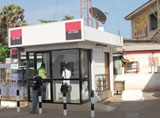

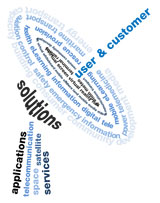
 The ARTES 3-4 Satcom Applications programme has been created to support applications projects related to satellite telecommunications either originated by industry or in response to specific applications calls initiated by ESA. It aims to improve the competitive position of industry in ESA member states in the field of satellite telecommunications and in their associated utilisation. Being an element of the ARTES (Advanced Research in Telecommunications Systems) programme it has successfully contributed to the development, qualification, and demonstration of applications since 1998.
The ARTES 3-4 Satcom Applications programme has been created to support applications projects related to satellite telecommunications either originated by industry or in response to specific applications calls initiated by ESA. It aims to improve the competitive position of industry in ESA member states in the field of satellite telecommunications and in their associated utilisation. Being an element of the ARTES (Advanced Research in Telecommunications Systems) programme it has successfully contributed to the development, qualification, and demonstration of applications since 1998. More than 75 participants from SMes all over Europe attended the IAP Ambassador Platform for Small and Medium-sized Enterprises (APsme) launch event in Brussels on 6 March.
More than 75 participants from SMes all over Europe attended the IAP Ambassador Platform for Small and Medium-sized Enterprises (APsme) launch event in Brussels on 6 March.